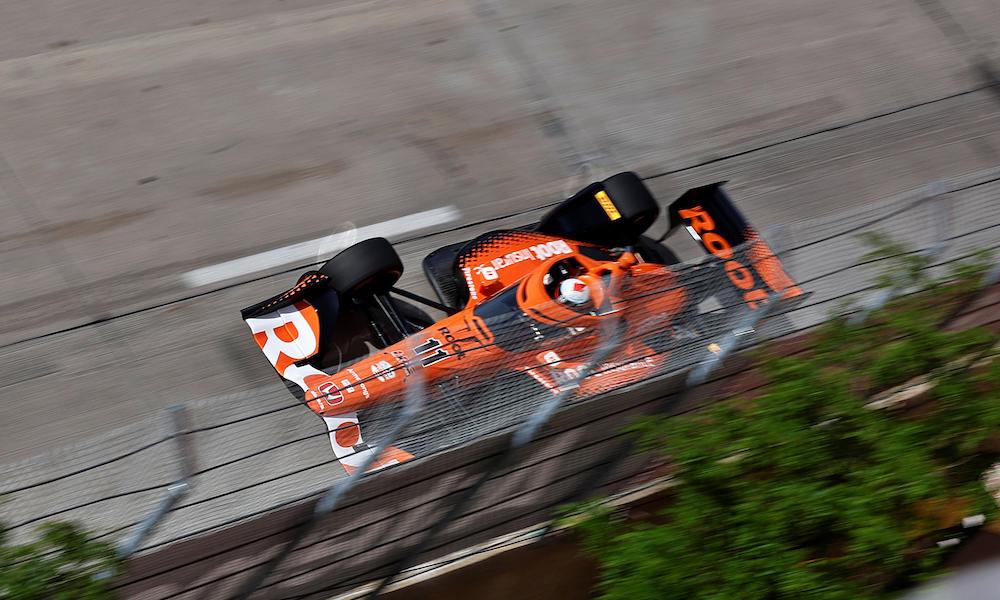If there was a ‘Sneaky-Good Driver of the Early Season’ award in IndyCar, it would go to Chip Ganassi Racing’s Marcus Armstrong.
The young New Zealander impressed on occasion during his debut season in a part-time role, and despite recording five finishes between sixth and ninth place, Armstrong wasn’t able to deliver a breakthrough drive. That changed on Sunday in Detroit, where the Kiwi chased teammate and countryman Scott Dixon in the closing stages of the crash-filled event.
Although former teammate Marcus Ericsson slid through to take second for Andretti Global, Armstrong’s stout charge to third — to stand on his first IndyCar podium while Dixon delivered his 58th victory — spoke to the 23-year-old progress in his new full-time role for Ganassi.
“It was chaotic; it started raining already when we were on the grid before the start of the race so I knew straight away that there was going to be some sense of urgency from everyone. And it didn’t disappoint,” Armstrong told RACER.
“After that first yellow, it just turned into staying out of trouble, because there was always something going on down at Turn 3 as people were being very aggressive for no apparent reason. And we just made the most of it. I have to say that Taylor Kiel, my race strategist, did a phenomenal job of navigating me through everything that was thrown our way. Rain, shine, fuel save… it was all on the table. Taylor was one step ahead of everyone and I felt like we strategically had a good plan.”
Armstrong’s intentional efforts to drive within himself and avoid high-risk passing attempts whenever possible was the right approach for his No. 11 Honda effort. It not only produced his first podium in IndyCar, but also made for a meaningful first for his race engineer Angela Ashmore, who previously won races — including the Indianapolis 500 – as an assistant engineer, and now got to watch her driver spray champagne in Detroit as the person in charge of running the car’s entire engineering department.
Factor in the missed opportunities at St. Petersburg, where a braking problem led to his crash and a 25th-place, and the recent blown engine at the Indy 500 that left him 30th, and Armstrong’s year has only been blighted by adversity that was out of his control. The possibility certainly exists for him to use Detroit as a springboard to more front-running results.
“The 500 was a good a good example. I’d studied for that race like no other event that I’ve ever done, and we can take that approach to every race weekend because this championship is too competitive not to be absolutely prepared for anything. So I feel like we’re working hard, but I don’t think we’ve at all shown all our potential, which I think is actually positive because our results are still decent, but we’ve never left a weekend and been like, ‘Yeah, we’ve nailed it.’”
Having risen to 13th in the championship, and with a taste of what he’s been craving in IndyCar, Armstrong’s determined to do better this weekend in Wisconsin.
